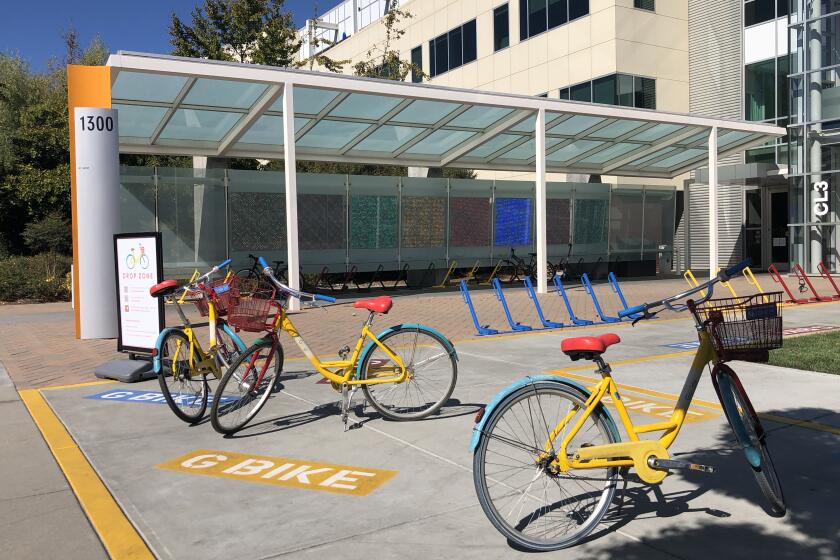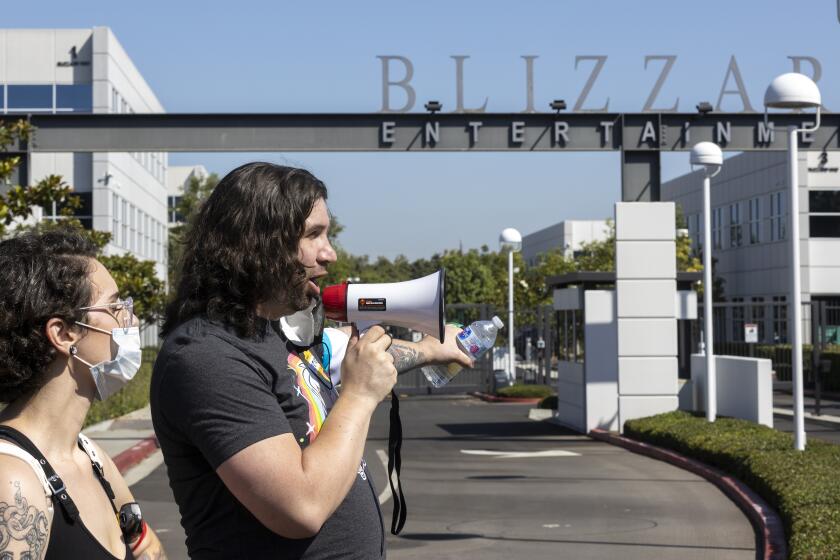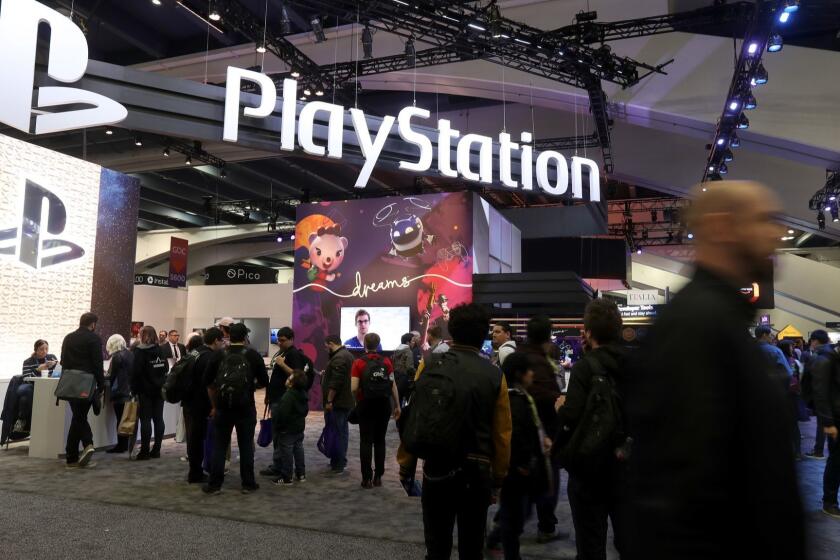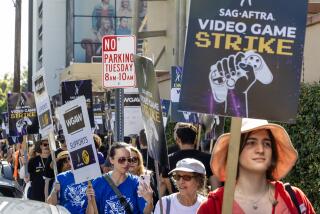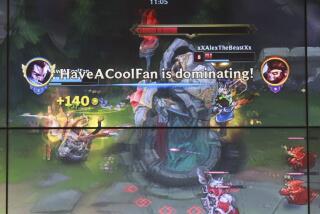How ‘crunch’ time and low pay are fueling a union drive among video game workers
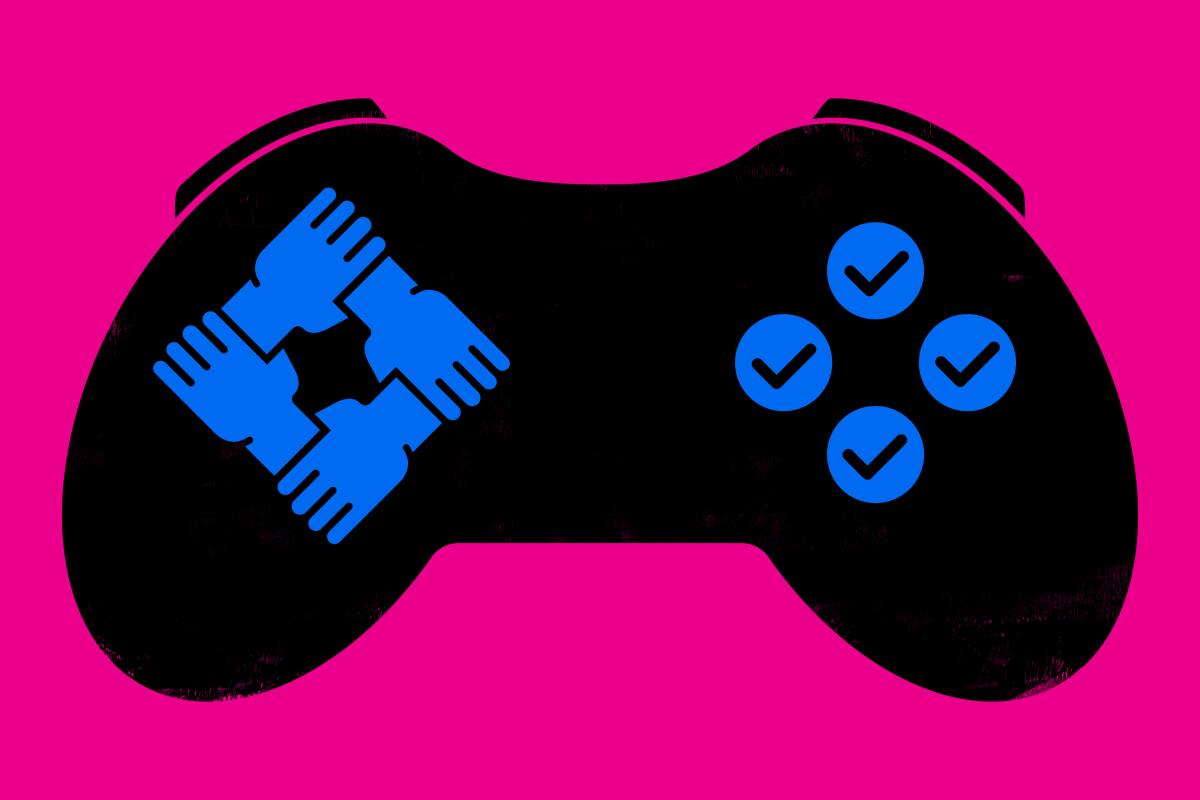
For months, Andrés Vásquez’s days working on the first-person shooter game “Doom” blended into one another.
A quality assurance tester for id Software in Texas, he spent 10 hours a day sitting at a desk and “crunching” on the game with his colleagues, repeatedly playing through its map creation mode and running through multiplayer matches in search of glitches ahead of its 2016 release. He’d often work weekends, logging nearly 60-hour weeks.
“It almost starts to feel like ‘Groundhog Day,’” the 33-year-old says. “It’s just so mentally challenging. You’re so tired that you just sleep and wake up to do it again the next day. It becomes a blur. ... You peek your head out from being in a tunnel and you’d come back to reality once the crunch was over.”
Video game workers have long decried so-called crunch periods, many of them dreading the months-long gantlet that leads up to a game’s release. Some workers describe sleeping at their desks or missing out on time with family and friends during this period; others struggle with anxiety and burnout.
Those and other grievances — including claims of discrimination and calls for fair and transparent pay — have led a growing segment of the industry’s workforce to unionize — a tactic many might associate more with old-school factory lines than 21st century software gigs. The organizing effort marks a budding shift in power in an industry that has long relied on contract labor and the romantic ideal that working on games is a dream worth sacrificing for.
Some 3.6 billion people are expected to play video games globally by 2025, up from 2.9 billion in 2020, according to a report from industry tracker Newzoo. The industry boomed during the first two years of the pandemic, but researchers say 2022 proved a course correction as revenue shrank. Analysts at Morgan Stanley believe the industry could rebound this year, as more big-budget games land alongside new consoles.
Yet, some workers feel they aren’t seeing their share of the industry’s growth.
The widening labor conflict has particular resonance in California, home to more gaming industry companies — over 600 of them — than any other state, according to the Entertainment Software Assn. trade group. A State of the Game Industry survey released in January found that a majority of game developers — 53% — are in favor of unionization. About one-fifth say they or their colleagues have actively discussed unionizing, according to the survey published by the Game Developers Conference and Game Developer, a trade publication.
As tech giants lay off scores of workers amid a sector-wide downturn, employees who once considered the Silicon Valley companies a safe long-term bet are reconsidering their allegiances.
“People are sort of waking up to the idea that they are, in fact, entitled to predictable work schedules, healthcare, fair compensation and equitable treatment,” says Joost van Dreunen, a games industry analyst and the author of “One Up: Creativity, Competition, and the Global Business of Video Games.” “That, historically, is something that hasn’t really pervaded the industry very much.”
But organizing efforts have had mixed results at video game studios both large and small.
This month, Microsoft took the unusual step of recognizing ZeniMax Workers United, a union formed under the Communication Workers of America, or CWA, and constituted of quality assurance employees across multiple studios at ZeniMax Media — id Software’s parent company, which Microsoft bought in 2021. The decision came after Microsoft agreed with CWA to remain neutral on the union — a decision that experts say could mark a turning point in a wave of labor organizing efforts that began five years ago.
Santa Monica-based Activision Blizzard, which Microsoft is seeking to acquire, has taken a different stance. It pushed back on efforts by workers at two game studios it acquired, Raven Software and Blizzard Albany, which also unionized with help from the CWA last year.
Workers at a third studio acquired by Activision Blizzard, the Boston-based Proletariat Inc., announced plans to unionize in December, but said this month that they would no longer seek an election, citing management’s “confrontational tactics.”
Joe Christinat, a spokesperson for Activision Blizzard, says the claim was false and that Proletariat’s CEO “was responding to concerns from employees who felt pressured ... and who wanted more information.”
Activision Blizzard uses a third party to benchmark employee wages against more than 40 competitors, mostly in tech and gaming, and the company’s pay scales are “fair in those comparisons,” Christinat says.
“We maintain the utmost respect for our employees to decide for themselves whether union representation is right for them,” he added. “Our goal is for our employees to not need to feel they need to be represented by a union because we are addressing their workplace needs.”
The uptick in union interest comes amid a broader rise in pro-union sentiment, including among digital journalists, says Jamie Woodcock, a senior lecturer at the UK’s University of Essex who helps run Game Worker Solidarity, which tracks labor organizing in the industry. Industry consolidation has further fueled dissatisfaction at game studios acquired by multinational corporations.
Microsoft, Riot Games and GameSpot all recently laid off game industry employees amid a wider downturn in the tech sector.
Angela Roseboro, a consultant for tech firms on diversity, equity and inclusion, and the former chief diversity officer at Riot Games, pointed to the #MeToo movement as a key turning point for labor organizing in the game industry. Women spoke up about harassment and abuse across the entertainment industry, including at Riot Games — the developer behind mega-popular “League of Legends” — which was eventually sued over claims of unequal pay and sexual harassment. The company agreed to pay $100 million to settle a class-action lawsuit.
“It was kind of a catalyst for folks to say, ‘Hey, we want to be part of a company that is doing good in the world, but doing good for us as well,’” Roseboro says of the #MeToo movement.
Employees at Insomniac Games, “World of Warcraft’s” Activision Blizzard and Ubisoft, the company behind the “Assassin’s Creed” franchise, later came forward with their own allegations of abuse and misconduct.
At the time of the claims, Insomniac tweeted that it had “taken numerous steps to address” the allegations and that it “actively promoted diversity, inclusion, representation and equality.” Multiple top executives at Ubisoft stepped down, and the company vowed to do better. Activision Blizzard denied wrongdoing, but it agreed to set up an $18-million fund for employees who say they experienced sexual harassment, or discrimination, pregnancy discrimination or retaliation.
The last few years have seen a surge of worker organizing activity in the video game industry, buoyed by a tight labor market and a string of damaging allegations around workplace culture.
Author Van Dreunen added that the switch from distributing physical copies of games to digital uploads also influenced labor politics in the video game sector. Studios once hired large groups of temporary workers before launching a blockbuster product, only to drop them after the release date, he explained. Today, at a time when games are constantly updated with new expansion packs and downloadable content, studios need to retain a steadier labor pool.
“The transition to service-based game publishing has made work conditions better because people have to work there a long time, on a rolling basis,” he says. It gave “more oxygen for workers to realize their worth.”
To workers who support organizing efforts, unionizing is a chance to earn a seat at the table and improve working conditions and pay across the industry.
Vásquez, the id Software quality assurance tester, went through a crunch a second time in late 2019 and early 2020, when he worked on “Doom Eternal,” the next installation of “Doom.” The grind felt worse then, he says, because he had recently gotten married and had a newborn son, whom he barely saw.
After nearly eight years at the same company, Vásquez decided to support the organizing efforts to help create a better path for career growth for quality assurance testers and push for more transparency around pay, he says.
“I felt like I had to add my voice to it,” Vásquez says. “We’re here doing an important job, which is making sure the product is the best it can be so people keep buying it. ... Why are we not being looked at, the same as developers?”
Amanda Laven says she supported a union at video game developer Blizzard Albany — formerly called Vicarious Visions — to preserve the company’s culture and expand protections for the quality assurance department, which relied on contract labor.
“While collective action without a union is very powerful, the only way to legally secure the benefits and rights that you want to have is with a union contract,” says Laven, an associate test analyst. “Up until last year, we were contract workers. We were not full time. We did not have a career progression.”
When she began working on Blizzard’s action role-playing game “Diablo IV,” she made $16 an hour. Some of her colleagues, she says, made as little as $14 an hour. The company has since raised the base pay rate for quality assurance testers, she says, but “compensation is definitely a major issue.”
“There’s a lot of misconceptions that the job that we’re doing is simple and fun and appropriate for a teenager,” she says. “But what we do does require a lot of skill and a lot of expertise, a lot of critical thinking, a lot of problem-solving skills ... The work we do is really important to ensuring the quality of these games.”
Labor advocacy groups have existed in the video game industry for years. In 1984, workers at Atari tried and failed to unionize.
In 1994, game developers founded what’s now known as the International Game Developers Assn. to represent the industry’s workers. But the group was not meant to be a union, just a vehicle to give labor a voice, says Kate Edwards, former executive director of the IGDA.
“The tech sector being pretty much averse to labor unions and to that whole movement, I think, also was carried over to the game industry,” Edwards says. “It’s like: ‘Well, we don’t need that. That’s for people who make cars. That’s for people who do physical work with their hands.’”
But as time went on, workers became increasingly frustrated with the grueling periods of crunch that preceded major game launches, she added.
Discussions continued in the industry for years — in Facebook groups, in Discord chats, in private conversations. Then came the 2018 Game Developers Conference, where a grassroots group called Game Workers Unite called for concerted labor organizing.
At an industry conference for video game developers in late March, the thousands of lanyarded attendees could try new games, swap business cards and hear from experts on rendering realistic blood spatter.
What followed, Edwards says, were early unionization efforts at Activision Blizzard as well as in the United Kingdom.
In Southern California, those conversations have also extended to indie studios. (The greater Los Angeles region is home to more than 200 video game companies, according to an Entertainment Software Assn. database.)
Workers at the Los Angeles art and games studio Tender Claws unionized with the CWA’s Campaign to Organize Digital Employees last year. (CWA is also the parent union of the NewsGuild, which represents workers at the Los Angeles Times.)
Robin Trach, a gameplay programmer at Tender Claws, says that independent companies can be seen as “fundamentally different” and less exploitative than those producing big-name titles, but that assumption isn’t entirely accurate.
“Some of the greatest horror stories I’ve heard from my colleagues in the local game industry are from independent companies,” she says. “There’s no one you can turn to if the owner is involved, or sympathetic to the person who’s been abusive.”
Employees at Tender Claws wanted to unionize, she says, to reduce crunch hours, diversify the hiring process and create a system for pay standardization and equity. Most employees, she added, “really like working here and we have a friendly relationship with management.”
The company’s co-founders said last summer they are “thrilled to recognize and work with the union.”
But the 27-year-old Trach recalled crunching at another start-up on a game that was “really in shambles.” On the day the game was due, she worked until 7 a.m.
“I wasn’t really living any type of human life,” she says.
Her team went to a diner to celebrate after the build was shipped. When Trach’s boss dropped her off at home afterward, he told her he was proud of her.
To Trach, the praise rang hollow.
“I remember in that moment feeling sort of disgusted about it. I just absolutely busted my chops to make your game. I stayed up all night ... This isn’t about my personal validation. This is a job.”
More to Read
The biggest entertainment stories
Get our big stories about Hollywood, film, television, music, arts, culture and more right in your inbox as soon as they publish.
You may occasionally receive promotional content from the Los Angeles Times.
